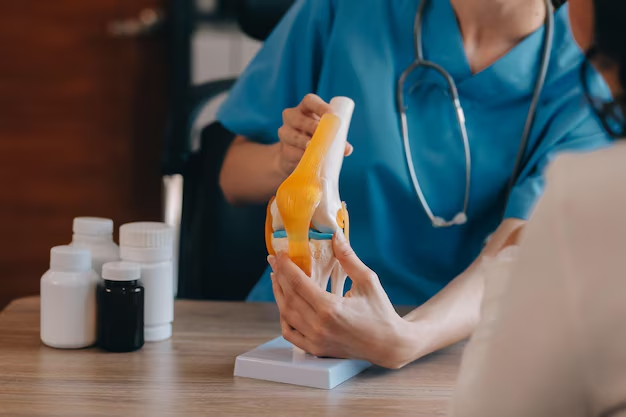Understanding Osteoporosis: Causes and Prevention
Osteoporosis is a condition that often hides in plain sight, mostly surfacing when a fracture occurs. But how exactly do people develop osteoporosis? Understanding the causes and risk factors is key to preventing and managing this prevalent bone disease.
What Causes Osteoporosis?
Osteoporosis occurs when the creation of new bone doesn't keep pace with the removal of old bone. As a result, bones become weak and brittle. Here are the main factors that contribute to the development of osteoporosis:
Hormonal Changes: Particularly significant for postmenopausal women, hormonal changes lead to a decrease in bone density. The drop in estrogen levels can accelerate bone loss. Similarly, men experience a gradual drop in testosterone levels that can contribute to bone thinning.
Age: As people age, bones naturally become thinner. This bone mass loss increases the risk of developing osteoporosis.
Dietary Deficiencies: A diet low in calcium and vitamin D significantly contributes to weakened bones. Calcium is crucial for maintaining bone structure, while vitamin D helps your body absorb calcium.
Lifestyle Factors: Lack of physical activity, excessive alcohol consumption, and smoking can all accelerate bone loss. Weight-bearing exercises are essential for maintaining bone strength.
Genetics: A family history of osteoporosis can increase your risk. If your parents or siblings have osteoporosis or a history of fractures, there's a higher chance you'll develop it too.
Medical Conditions and Medications: Certain ailments like rheumatoid arthritis, diabetes, and hyperthyroidism, along with the long-term use of corticosteroids, can interfere with bone remodeling processes.
By recognizing these factors, individuals can take proactive steps to manage their health and reduce the likelihood of developing osteoporosis.
How to Mitigate the Risk
Fortunately, there are several lifestyle and dietary changes one can adopt to boost bone health and minimize the risk of osteoporosis:
Nutrition is Key: Ensure a diet rich in calcium and vitamin D. Dairy products, leafy greens, and fortified foods are excellent sources.
Stay Active: Engage in regular weight-bearing and muscle-strengthening exercises. Not only does this improve bone health, but it also boosts overall wellness.
Avoid Smoking and Excessive Alcohol: Quitting smoking and limiting alcohol intake can help preserve bone mass.
Medical Check-Ups: Regular screenings and bone density tests, especially for those over 50 or with a family history of osteoporosis, are crucial for early detection and management.
Exploring Financial Assistance and Resources
Managing osteoporosis, or any chronic condition, can be a financial burden. However, there are resources available to help ease this burden and make treatment more accessible.
Government Aid Programs: Programs such as Medicaid and Medicare often cover screenings and treatments related to osteoporosis.
Financial Assistance Programs: Many hospitals and health facilities offer financial assistance or charity care programs based on income and need.
Educational Grants: For those in need of further education on osteoporosis management, certain grants or scholarships might be available to support learning in health management or nutrition fields.
Useful Resources to Explore:
- 🏥 Medicaid and Medicare: Check eligibility for healthcare coverage concerning osteoporosis.
- 💸 Financial Assistance Programs: Inquire at your local hospital or health center.
- 🎓 Educational Grants: Search for grants in public health or nutrition to learn more about osteoporosis management.
- 🚴 Community Health Programs: Participate in local exercise programs designed to enhance bone health.
- 📚 Support Networks: Join osteoporosis support groups for community advice and resources.
By staying informed and accessing available resources, managing osteoporosis effectively becomes much more attainable. Small changes today can lead to significant health improvements and financial relief in the future.

Related Topics
- a Nurse Is Caring For a Client Who Has Osteoporosis.
- a Percutaneous Is Performed To Treat Osteoporosis Related Compression Fractures
- Can Alcohol Cause Osteoporosis
- Can I Do Pilates If I Have Osteoporosis
- Can I Reverse Osteoporosis
- Can Men Get Osteoporosis
- Can Osteoporosis Affect Teeth
- Can Osteoporosis Be Cured
- Can Osteoporosis Be Painful
- Can Osteoporosis Be Reversed